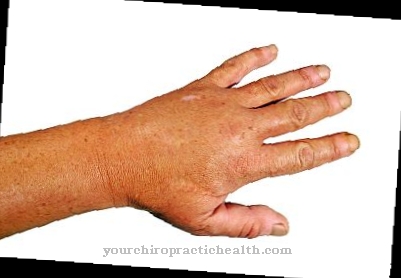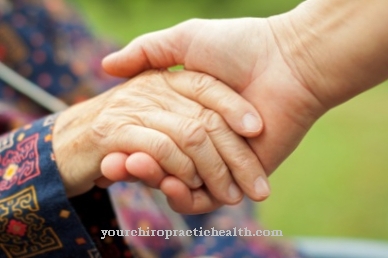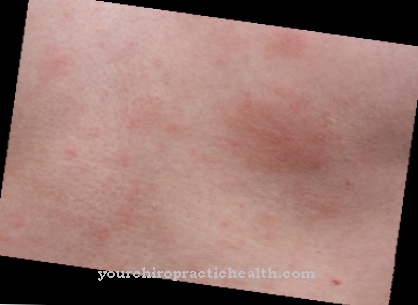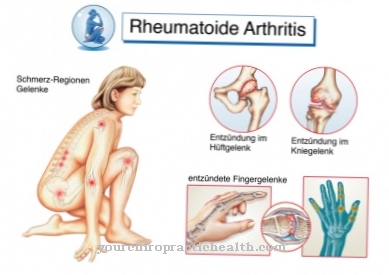aggressions, in whatever form, scares people. It has many faces and can turn against people, things, objects and things of all kinds. Consciously harming someone or something is aggression. The countless reports and messages give the impression and suggest that aggression in our society is steadily increasing.
What is aggression

Actions of any kind that are deliberately and purposefully carried out to harm or destroy are called aggression. Aggression can be physical or verbal. There are very many approaches and theories about how to define aggression.
The learning theory approach of psychology explains aggression as a learned, acquired behavior of the person during his entire life. This model-based learning can often be observed, especially in children. Children are decisively influenced by the adult human being, by television consumption, by the Internet and by video games.
Aggression is therefore mainly characterized as a behavioral or emotional disposition. In contrast to violence, violence is a form of expressing aggression. It is also to be seen as a subset of aggression.
causes
Above all, aggression can also be of a family nature. Their causes can be found in a mental illness of the mother or the propensity for violence of the alcoholic father. In this context there are a variety of unfavorable conditions in families and in the environment that can trigger aggression.
These include, for example, family tensions, a lack of positive role models, no recognition, physical violence and sexual abuse. The study “On the Development of Violence in Germany” by the Zurich University on behalf of the Federal Ministry for Family, Seniors, Women and Youth (BMFSFJ) shows that adolescents experience decisive violence in two areas. That’s the school on the one hand and the family on the other.
In which of the two areas children and adolescents are now confronted with violence could not be identified. This study shows that the majority of adolescents exposed to aggression at home reported mild forms of violence. Severe aggression, such as kicked, beaten or beaten up, against children and young people in families is described by 15% of adolescents.
Psychology plausibly explains the aggression with the learning theory approach. Accordingly, aggression is learned by humans as a certain behavioral category. This is basically the same as learning to swim, read or write.
A distinction is made between three types of learning:
Classic conditioning
Stimuli can trigger certain behavior in humans. This behavior is known as the unconditional response. This stimulus-response learning is a combination of stimulus and reaction that takes place independently of consciousness.
Operant conditioning
Here the behavior is the instrument that causes the corresponding consequence. A distinction is made here between positive and negative reinforcement, punishment and cancellation. This learning process takes place under certain conditions and in certain situations. Accordingly, the behavior later only appears in similar situations.
Learning on the model
Learning on the model is also known as observational learning. A previously observed action of the model is imitated or imitated. When observing, the reinforcing consequences of the model behavior are also perceived. The imitation reaction does not have to be shown promptly. It is mainly learned from the harm or benefit others have experienced. Since the influence of adult role models and media is particularly great in childhood, this model can often be observed here.
Diseases with this symptom
- Anxiety disorder
- Burnout syndrome
- Psychosis
- Drug psychosis
- rabies
- Dissocial Personality Disorder
- high blood pressure
- alcoholism
- Alcohol addiction
Complications
Aggressions are pronounced behavioral disorders and can occur at any age. These behaviors, such as turning around, destroying objects, rioting and self-mutilation, can endanger yourself or others.
Aggressive people are mostly rejected by their behavior. You are marginalized. However, the more the contact with the social environment is broken, the higher the risk of aggression.
When should you go to the doctor?
Aggression can also be due to organic diseases. There is a cohort of people who exhibit aggressive behavior due to metabolic disorders and intellectual disabilities. Neurogenerative changes such as dementia also show symptoms of pronounced, aggressive behavior.
If the aggressions lead to behavior that is endangered by others or oneself, medical treatment is necessary. After an initial clarification by the family doctor, the specialist in psychiatry and psychotherapy or the neurologist are responsible.
Doctors & therapists in your area
diagnosis
Aggression or aggressive behavior of a person presupposes for the diagnosis that it is a disorder that is characterized by a consistent pattern of antisocial behavior.
The specialist for psychiatry and psychotherapy or neurologist will carry out the examinations with the help of discussions, exploration of loved ones and special survey instruments for behavioral and psychodiagnostics. It will certainly be clarified since when the aggressive abnormalities have existed and whether the causes can be found in the development or in relation to a specific clinical picture.
A differential diagnosis must take place. Aggressive behavior can also occur with mental disorders. Examples of this would be psychoses, developmental disorders and the like. a.
However, the following diseases with a possible aggression potential must be clarified particularly carefully:
- Organic personality disorder, caused by brain damage after an accident
- Post-traumatic stress disorder, caused by a stressful, decisive life event
- Adjustment disorders as a result of drastic changes in life (separation from partner, flight).
- Unstable personality disorders, prone to arguments and conflicts with others, which can include outbursts of anger and acts of violence.
Treatment & Therapy
Therapy should be given as early as possible. The earliest possible diagnosis and consistent support are therefore necessary. Actually, prevention begins before the child is born. In this way, pregnant women from a problematic social environment can receive targeted advice. Here the consequences are shown that the unfavorable behavior and consequential educational methods could cause.
In the case of acute, aggressive behavior with danger to others or to oneself, admission to a hospital is often inevitable. Suitable measures are then taken here to improve the symptoms. Then the use of psychotropic drugs and especially neuroleptics in acute states of excitement cannot be avoided.
Recurring aggression can be very protracted to chronic. They depend on the respective personality. Recurring aggression patterns are generated by similar situations. Accommodation in a special facility is inevitable. To protect the person concerned and his environment, safety aspects must be observed.
Isolation rooms are also necessary for some situations. The treatment must be approved by the court. There are then permanent employment offers to be submitted. Sufficient, qualified personnel is necessary for the supervision.
Regression is a key to gaining access to the affected person. People who behave regressively leave the field to the person concerned. This can definitely be helpful to protect other things. The regressive remains passive and waits first. He refrains from bringing in any impulses of his own. In this way, the person concerned does not encounter external obstacles with his aggressive behavior. The regressive avoids conflicts and the risk of the situation escalating.
You can find your medication here
➔ Medicines to calm down and strengthen nervesOutlook & forecast
Aggressions are treated primarily through discussions with the attending physician, the technically experienced therapist and with the help of medication. The duration and the result of the treatments depend on the extent of the existing aggressive behavior and aggressiveness potential.
There are therefore no clear guidelines for forecasting. All negative influencing factors that can cause or intensify the aggression are to be eliminated as far as possible.
In the event of aggression, behavioral regulation should take place. This takes place in the form of training. The more pronounced the aggression disorder, the longer the intensive training treatment will take. The great difficulty that exists here is to permanently promote and maintain the motivation for this training in the person concerned. Training breaks are unfortunately not uncommon.
prevention
At the first sign, conversations should be held with trusted, close people. People or things that might encourage the behavior should be removed. Understanding of the situation at hand should be shown and shown openly.
The limits and consequences of aggressive behavior should be shown. A negative attitude is to be avoided. Offers to calm down should be made, for example by going to a quiet room or offering tea. The more relaxed and balanced one is able to deal with the situation, the better the patient can be directed and led.
As with other mental illnesses, belonging to an intact and stable social environment has a preventive effect. This minimizes the possibility of getting sick. In addition, renouncing drugs, alcohol and other addictive substances have a positive effect. A well-filled everyday life that brings satisfaction provides a good basis for a life without aggression.
You can do that yourself
People with aggression disorders can take measures and develop strategies, which, however, will vary widely and depend on the type of disorder. It must be made clear that an unavoidable, holistic therapy for aggression disorder must distinguish between self-damaging and self-damaging behavior.
As a rule, the primary goal is not to eliminate a pronounced anger disorder. This is often hardly possible. It is therefore imperative to create valves for the person concerned that he can use to keep the aggressions under control with self-discipline. Since this is about releasing the urge to aggression, it is at the discretion of the therapist to find suitable options together with the person concerned. These should be suitable for everyday use and be part of the ongoing course of therapy.
People with aggression that lead to harm to others and themselves should avoid situations, things or people that could cause this behavior. In addition to medical and psychotherapeutic treatment, relaxation exercises are very suitable. Sport is always a good means of doing something good for body and mind and, if necessary, reducing potential for aggression.
Self-help groups offer the opportunity to regularly exchange ideas with those affected in a protected setting.Here you can bring in your own experiences with aggression. Those affected learn from each other how to better cope with problems in the future. New perspectives for living with aggression are developed.
























.jpg)



